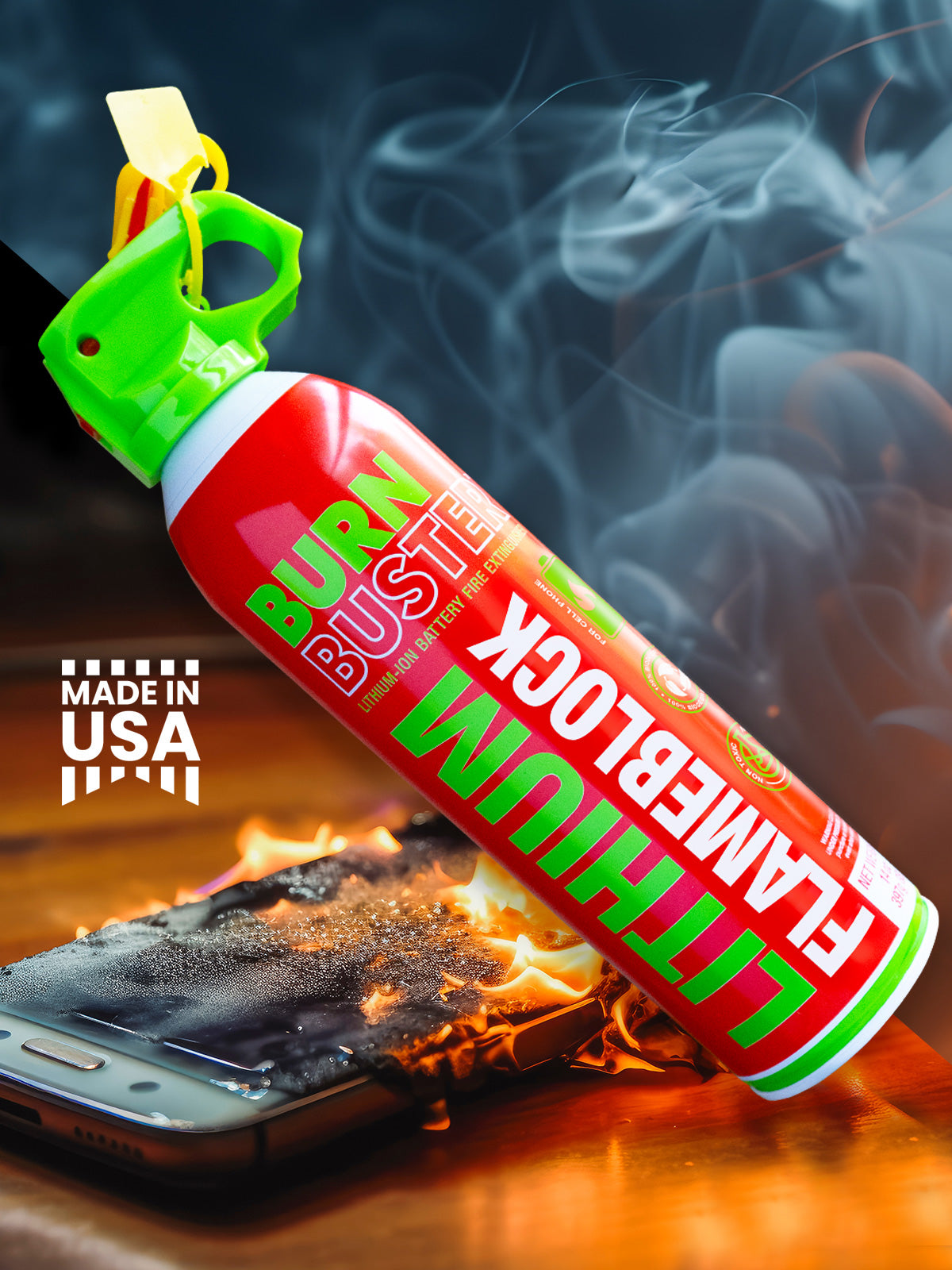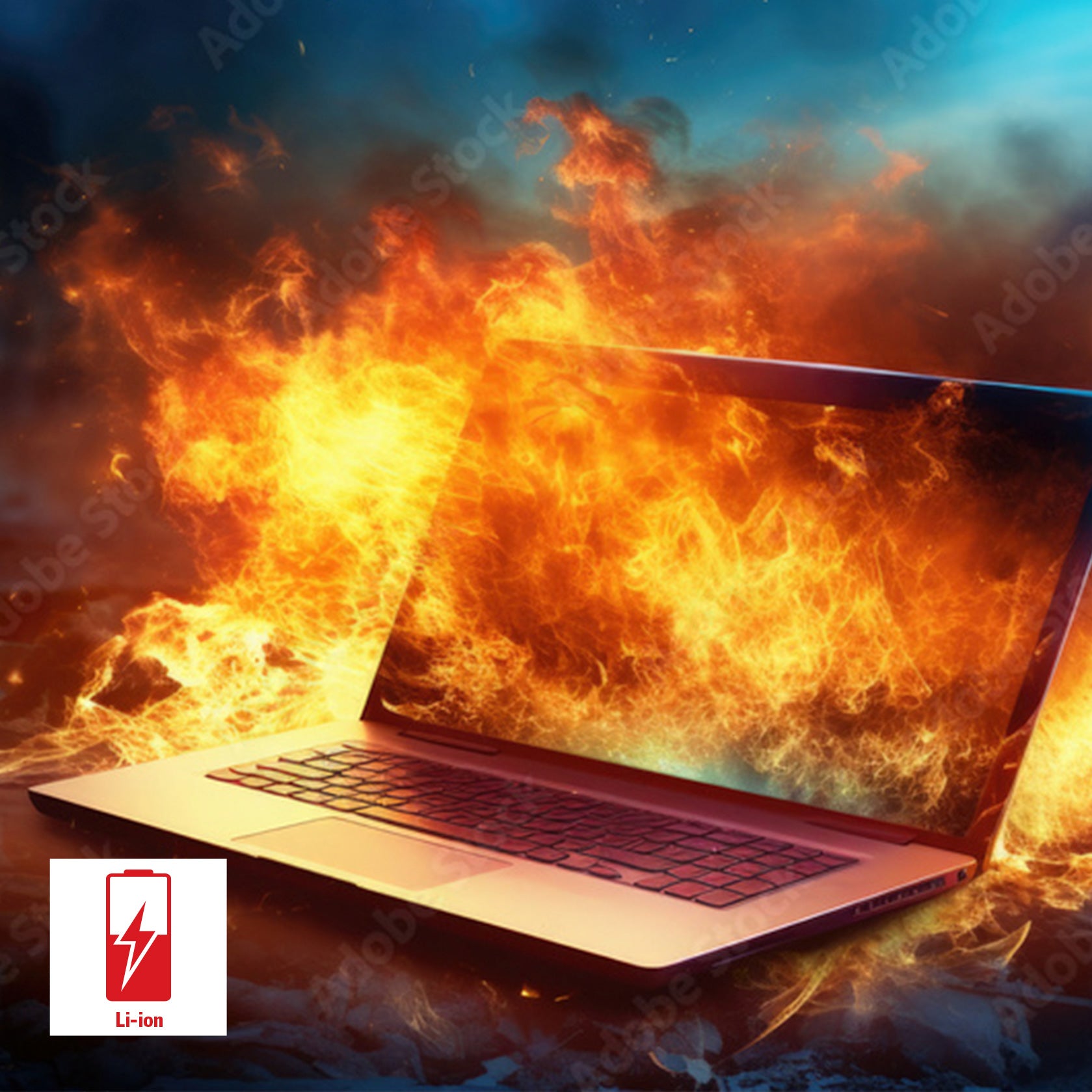Lithium-ion batteries have become an indispensable part of modern technology, powering everything from smartphones and laptops to electric vehicles and e-scooters. Despite their widespread use, these batteries pose a unique fire hazard due to their energy density and chemical composition. When a lithium-ion battery catches fire, conventional firefighting methods—including the use of powder-based fire extinguishers—are often ineffective. Here’s why.
Understanding Lithium-Ion Battery Fires
Lithium-ion battery fires are triggered by a phenomenon known as thermal runaway. This occurs when the battery overheats, causing a chain reaction of chemical and physical changes within the cell. These changes release flammable gases, such as hydrogen and oxygen, which can ignite and sustain a fire. What makes these fires particularly dangerous is their ability to reignite even after being extinguished due to residual heat and chemical instability.
The Limitations of Powder-Based Fire Extinguishers
Powder-based fire extinguishers, while effective against many types of fires, are ill-suited for lithium-ion battery fires for several reasons:
-
Inability to Interrupt Thermal Runaway: Powder-based extinguishers are designed to smother flames and prevent oxygen from feeding a fire. However, lithium-ion battery fires do not rely on external oxygen; they generate their own through chemical reactions within the cell. This self-sustaining nature means that smothering the flames with powder is largely ineffective.
-
Ineffectiveness Against High Temperatures: Lithium-ion fires burn at extremely high temperatures, often exceeding 1,000°F. The powdered agents in these extinguishers, such as monoammonium phosphate or sodium bicarbonate, are not designed to absorb or dissipate heat effectively, leaving the underlying cause of the fire unaddressed.
-
Risk of Reignition: Even if the visible flames are extinguished, the heat and chemical instability within the battery cells can lead to reignition. Powder-based extinguishers lack the capability to cool the battery sufficiently to prevent this.
-
Mess and Limited Containment: The powder discharged by these extinguishers can create a mess, complicating cleanup and potentially spreading hazardous materials from the damaged battery.
What Works Instead?
To address lithium-ion battery fires, specialized firefighting solutions are necessary:
-
Water Mist Systems: While water is generally not recommended for electrical fires, finely atomized water can be used to cool lithium-ion battery fires and reduce the risk of reignition. Proper handling is crucial to avoid electrical hazards.
-
Class D Fire Extinguishers: Specifically designed for metal fires, these extinguishers use dry powders that can absorb heat and smother the fire’s chemical reactions.
-
Lithium-Specific Fire Suppressants: Advanced fire suppressants, such as F-500 encapsulating agents, are effective in cooling and interrupting the chemical reactions fueling the fire.
-
Fire Blankets: Specialized fire blankets can be used to isolate the fire, contain flammable gases, and prevent the spread of flames.
Prevention Is Key
The best way to handle lithium-ion battery fires is to prevent them from occurring in the first place. Here are some safety tips:
- Use manufacturer-approved chargers and avoid overcharging.
- Store batteries in a cool, dry place away from heat sources.
- Inspect batteries for physical damage and dispose of compromised units responsibly.
- Avoid puncturing or exposing batteries to water, which can trigger dangerous reactions.
Conclusion
Powder-based fire extinguishers, while versatile and widely used, are not suitable for combating lithium-ion battery fires. The unique chemical and thermal dynamics of these fires require specialized extinguishing methods and proactive safety measures. As lithium-ion batteries continue to power our world, understanding and addressing their fire risks is essential for protecting lives and property.




Leave a comment
This site is protected by hCaptcha and the hCaptcha Privacy Policy and Terms of Service apply.